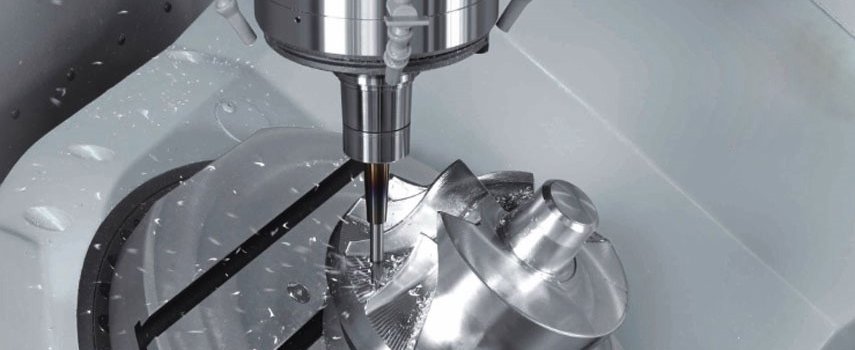In the field of mechanical processing, the phenomenon of error reflection is an issue that cannot be ignored. It refers to the phenomenon where dimensional and shape errors generated during the machining process are transferred to the final product due to the inaccuracy of the machine tool, tool, or workpiece itself.
This can occur due to various factors throughout the CNC machining process, including machine tool inaccuracies, tool wear, programming errors, material inconsistencies, and environmental conditions.
Common Sources Of Error Reflection In CNC Machining:
Machine Tool Accuracy:
Inaccuracies in the machine tool’s positioning, backlash, or thermal expansion can lead to deviations in the machined part’s dimensions and surface finish.
Poor machine calibration or maintenance can exacerbate error reflection by introducing additional errors into the machining process.
Tool Wear and Deflection:
Wear and deflection of cutting tools can cause deviations in the machined part’s geometry and surface quality.
As cutting tools wear over time, their cutting edges may become dull or chipped, resulting in poor surface finish and dimensional inaccuracies.
Excessive tool deflection, especially when machining deep features or hard materials, can lead to taper, out-of-roundness, or other geometric errors in the machined part.
Programming Errors:
Errors in CNC program code, such as incorrect tool paths, feed rates, or tool offsets, can result in machining inaccuracies.
Programming errors may lead to collisions between the cutting tool and the workpiece, causing damage to both the tool and the part.
Material Inconsistencies:
Variations in material properties, such as hardness, composition, or grain structure, can affect the machinability of the workpiece and contribute to error reflection.
Inhomogeneities in the material may cause uneven chip formation, surface finish variations, or tool wear patterns.
Environmental Factors:
Changes in temperature, humidity, or vibration levels in the machining environment can influence the stability and accuracy of the machining process.
Thermal expansion of machine components or workpiece material can cause dimensional changes in the machined part.
Vibrations from nearby equipment or floor disturbances can induce tool chatter, leading to surface finish defects and dimensional inaccuracies.
Strategies To Minimize Error Reflection:
By implementing these strategies and continuously monitoring and optimizing the machining process, manufacturers can effectively reduce error reflection in CNC machining, resulting in higher accuracy, improved quality, and enhanced productivity.

Machine Calibration and Maintenance:
Regularly calibrate CNC machines to ensure accurate positioning and alignment of machine components.
Perform routine maintenance tasks, such as lubrication, cleaning, and inspection of machine tool components, to prevent wear and degradation that can lead to errors.
Tool Management:
Use high-quality cutting tools with proper geometry and coatings suited for the specific machining application.
Implement a tool management system to track tool usage, monitor wear, and schedule timely replacements to prevent tool degradation and associated errors.
Optimize Cutting Parameters:
Fine-tune cutting parameters such as spindle speed, feed rate, and depth of cut to optimize material removal rates while minimizing tool wear and vibration.
Employ adaptive machining techniques that dynamically adjust cutting parameters based on real-time feedback from sensors or tool condition monitoring systems.
Advanced Machining Strategies:
Utilize advanced machining strategies such as trochoidal milling, high-speed machining, and dynamic milling to reduce cutting forces, minimize tool deflection, and improve surface finish.
Implement strategies for reducing tool engagement and avoiding excessive heat generation, such as ramping, helical interpolation, and peck drilling.
Material Selection and Preparation:
Choose materials with consistent properties and homogeneity to minimize variations that can affect machinability and dimensional accuracy.
Ensure proper material fixturing and workholding techniques to secure the workpiece and minimize vibrations during machining.
Programming and Simulation:
Use CAD/CAM software to generate toolpaths and simulate machining operations to detect and correct potential errors before they occur.
Verify CNC programs through thorough testing and simulation to ensure compatibility with machine capabilities and part specifications.
Quality Assurance:
Implement rigorous quality control measures, including in-process inspections, dimensional measurements, and surface roughness analysis, to identify and address errors during machining.
Conduct post-machining inspections and verification to validate part dimensions, tolerances, and surface quality against design specifications.
To mitigate error reflection in CNC machining, it is essential to implement robust quality control measures, including regular machine maintenance, tool inspection, and calibration. Additionally, optimizing machining parameters, employing advanced cutting strategies, and using high-quality materials can help minimize errors and ensure consistent part quality. Continuous monitoring and adjustment of the machining process are also critical for identifying and addressing error sources promptly.



